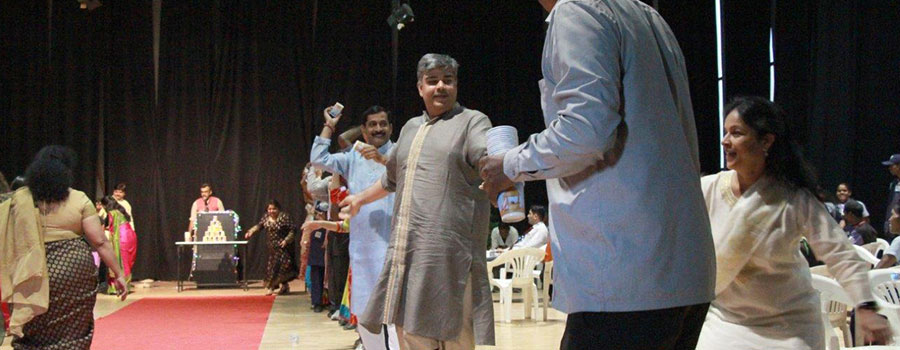If conjunctions were exclusive to language, a community would cease to exist. Conjunctions are not only important in grammar, but also in communities, where they take a form of social gatherings, festivals and other cultural events. The first ‘Sahyog Diwas’ held in the FLAME community this November acted as this conjunction, which united the faculty, support staff and the students. As the name suggests, the event emphasized the spirit of an ensemble. This conjunction promoted collaboration between different members of the community to create a product of higher value, similar to joining different phrases to form a sentence. The idea of ‘Sahyog’ or acting in conjunction honored and celebrated the interdependence of the members in the FLAME community.
In order to promote collaboration within the community, both students and staff members performed at the event. From the melody of the classics to the multilingual conversations, the performers and speakers celebrated the diversity that existed within the community. Nonetheless, the presence of all members beneath one roof highlighted the ensemble spirit despite the cultural and linguistic diversity. Amongst these performers, I also had the opportunity to deliver an original piece of spoken-word poetry.
Whilst writing this poem, I was urged to transcend my personal voice and embody the collective voice of the community. This altered the way I thought about themes, expression, and style. During the ideation stage, I began thinking with a mindset of expressing my own emotions, opinions, and responses - the way I always think about my poems. I view them as a telegram from me to the audience, where I use minimal words to express my thoughts. However, after reconsidering my audience, the event and the concept of ‘Sahyog’, I realized that my mindset needs to be altered. In this performance, I was not the persona. Instead, I was representing the community, which was talking back to the community itself. This brought me back to the idea of ‘Sahyog’ - it was not about ‘we’ and ‘them’, it was about ‘us’. Post this realization, I shifted the focus of the poem to the spirit of the ensemble. As a result, I contemplated what the community wants to say to itself. It occurred to me that although we recognize the interdependence of the community members, we often don’t find the time, space and the right words to explicitly appreciate each other’s work. Thus, I decided to revolve the central theme of my poem around the concept of ‘Shukriya’ - a thank you from the community to the community.
Although I wasn’t performing in front of an audience for the first time, I was extremely nervous prior to my performance. It was the first time I had written from a collective point of view instead of an individualistic one. At the same time, I trusted the ensemble I was a part of, who would provide me with support and encouragement if and when I needed it. This warmth came from the faculty and staff in the audience, my fellow performers as well as the students in the organizing committee. This constant feeling of ‘Sahyog’ boosted my morale and increased my confidence before and during my performance. I noticed that this ‘Sahyog’ was not only shown towards me but towards all the members of the community present there, including our beloved faculty, wardens, the Sukh Sagar staff, the DTS workers, as well as the students. Such an aura re-emphasized the spirit of and the purpose behind ‘Sahyog Diwas’.
Every experience has one key moment, often a learning, that is embossed in time. One such learning that I am going to take back from this event is an observation made by one of the speakers. In their speech, they highlighted that the support staff at FLAME was always smiling regardless of the issues they faced in their lives. Never a complaint, always a smile. This taught me that we must face our problems with a smile and have a positive outlook towards life and the troubles that it brings. My learning from another member of the community unveiled a connection between us, showcasing that the event was successful in its role as a conjunction. It also illustrates that ‘Sahyog’ isn’t just about collaborating with each other, but about learning from each other, allowing us to grow as an ensemble. This stimulation of learning and growth is the true crux of the concept of ‘Sahyog Diwas’.
By Devi Dang, First Year Undergraduate Student


